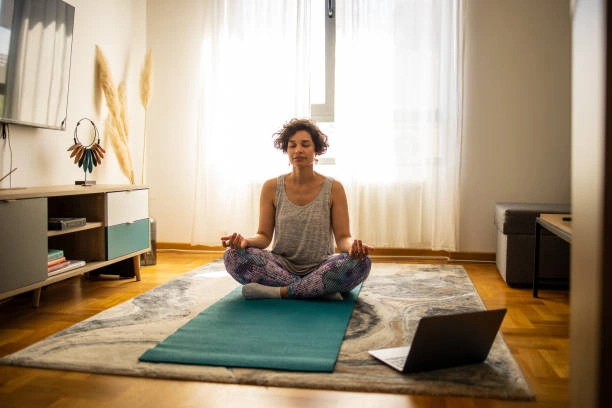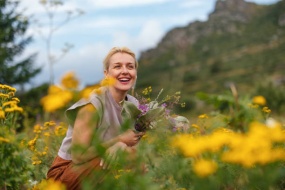How to Practice Mindfulness Meditation
Author:
Serenity
, Published on
Oct 9, 2024 03 pm
Preparation:
- Motivate Yourself: Take a moment to remind yourself why you chose to meditate. Your goals should be clear. This way, you can assess whether your practice is effective. Motivation helps you cope with restlessness or other obstacles during practice.
- Set Realistic Goals: Start by meditating for 3 to 5 minutes and gradually increase the time. Keep your expectations reasonable—don’t expect to reach a high level of awareness after just a week of practice. This will prevent feelings of surprise or discouragement and allow you to enjoy the process.
- Be Diligent: Consistent practice is key to achieving the results you want. Don’t waste time daydreaming. If you’re not diligent, you might waste time on unrelated issues instead of focusing on what you want to address through meditation. You might even end up criticizing the quality of your practice, leading to resistance, procrastination, and doubt.
- Identify Potential Distractions: Eliminate distractions like phones, work devices, or thoughts that disturbed you during the day. Clear your mind of these distractions before you begin meditating.
- Use a Timer: Track your meditation time effectively. Some mobile apps are great for this, offering timers and background music that can assist with meditation.
- Choose a Quiet Meditation Space: Avoid meditating on your bed or at your workplace. The bed can make you sleepy, and the office might have distractions. If you meditate regularly, consider setting up a designated area with a mat or a specific room.
- Find a Comfortable Meditation Posture: Your posture should allow your body to remain upright, with your shoulders, neck, and spine stable. Remember to keep your body aligned—this will help extend your meditation time and improve focus and relaxation. You can sit cross-legged, on a chair, or lie down, but lying down can lead to sleep unless you’re practicing bedtime meditation.
- Avoid Eating Before Meditation: The best time for meditation is before a meal. If you’re hungry, have a light snack like fresh fruit, dark chocolate, vegetables, almonds, or water. Avoid coffee, tea, and soda, as they can stimulate the brain and hinder relaxation. Alternatively, meditate two hours after a meal.
- Warm Up First: Stretching and gentle exercises before meditation can help relax the body, reducing restlessness or laziness.
- Breathe Deeply: Deep breathing is crucial for entering a meditative state.
- Smile: A smile can uplift your mood and help you maintain a calm and relaxed state.

Practice Techniques:
- Incorporate Meditation Elements: Adding elements to your meditation can enhance your mental and spiritual focus. Using the five elements—space, air, fire, water, and earth—helps ease fatigue and allows energy to flow.
- Space: Visualize the night sky or observe something in your environment that symbolizes growth or brightness.
- Air: I choose natural scents.
- Fire: A candle works well.
- Water: A bowl of water can represent this element.
- Earth: You could place a bowl of soil. If you have none of these, a stone, a fixed object, or a potted plant works too.
- Control Your Breathing: Breath control is key in meditation as it ties into all aspects of practice. Breathing can be both conscious and unconscious, but many don’t realize that conscious breathing can benefit both the mind and body. Shallow, irregular breathing can make you feel scattered, while rhythmic deep breathing brings satisfaction and is an excellent habit for life.Paying attention to your breath and heartbeat is especially important, as they accompany us from the start of life until the end. You can synchronize your breathing with your heartbeat to strengthen the connection between your heart and brain. When they are in harmony, you enter a state where anything is possible.
You can practice breathing techniques under the guidance of a yoga instructor or follow courses on mindfulness meditation.
- At the End of Practice: Don’t stand up immediately. First, move your eyes, wiggle your fingers, and slowly wake your body. Carry this feeling of joy into your daily life.

Latest Posts







